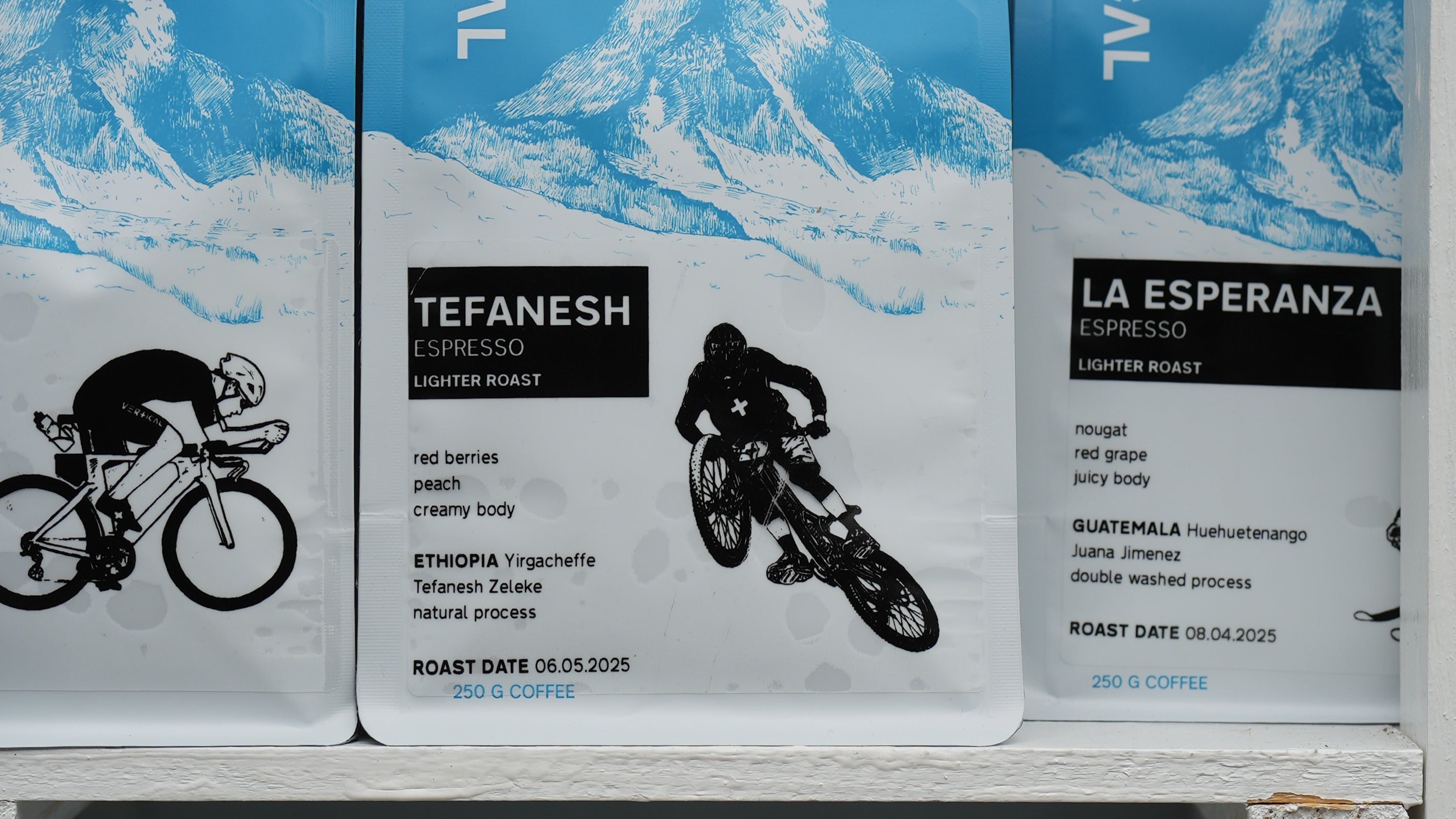Coffee ABC - G is for Grind Size

Grinding coffee is essential for preparing a cup of tasty coffee: By grinding the roasted coffee bean, we exponentially increase its surface area so water can interact and extract all the tastiness we want to make a great and balanced beverage. Poorly ground coffee will never make a good cup of coffee. That's it in a nutshell but let's dive a bit deeper.
Think of preparing a cup of coffee (filter or espresso) as the last link in a long chain. Each step along the way needs to be executed well if the next one is expected to be a success, just like every link needs to be strong to support the load of a chain.
It starts with the producer growing coffee, picking and processing it, logistics moving the coffee from origin to destination and to a roastery, the roaster turning the green to brown properly and passing it on to you, the consumer. You open the bag of beans, grind it, immerse or percolate with water and enjoy the finished product.
There are many volatile aromatic compounds locked inside the whole roasted bean. They naturally diffuse when the coffee is ground and surface area is increased. It doesn't happen within the blink of an eye but within around 15-30 minutes. Which means it's best to grind your coffee fresh just before preparing your coffee. Which in turn means ideally investing in a quality grinder.
OK then, let's talk grinders. There is a wide array of options out which can be daunting or overwhelming - but by arranging them in different categories we can start to get an overview.
First things first: What to avoid. The cheapest type of grinders you'll come across are blade grinders which have a chamber with two or more blades where you can put your beans into and when turned on, the blades roate and uncontrollably smash the coffee beans to bits. What may make this system attractive is its price: Standalone products retail for less than CHF 50 and food processor or blender manufacturers may tell you that their product also can grind coffee. Spoiler alert - they randomly break beans but it's got nothing to do with proper grinding. You might as well just throw your coffee beans in the garbage and here's why: The blades hit against the beans and break them in no intentional way which leads to some particles being crushed over and over again thus getting smaller and smaller while other particles remain very large. The result is an extremely uneven grind where you get over- and underextraction at once. The very fine particles will overextract and the large particles will underextract, messing up your brew.
We'll head over to the good stuff then, shall we? The other main category we have is burr grinders. Two burrs are stacked with a adjustable gap in between to allow a variance in grind size. Most commonly, one burr is fixed while the other is in motion and crushes the coffee bean in a controlled way.
Within the burr grinders and specifically the burrs, we differentitate between two types: Conical burrs and flat burrs.
Conical burrs consist of an outer burr which is a bit like a collar and the inner burr which is a tapered piece that fits in the outer one. Both have "teeth" or cuts on the sides opposing each other. The inner burr will be turning and grinding the coffee bean down to the desired particle size. Then due to gravity, the ground particles will fall down into a chamber below the burrs, ready to be used for brewing. One strong argument in favour of the conical burrs is the low retention, i.e. there is almost no coffee left between the burrs after grinding and when no beans are fed.
In general, conical burr grinders deliver a controlled and good grind but they do have a wider range in particle size that flat burr grinders. Conical burr grinders will be found in most hand grinders due to the compact build and functionality while utilizing rather low speed / fewer revolutions per minute (RPM). But they are also found in electronic/automatic grinders like the Niche.
Flat burr grinders are the most commonly used type in commercial grinding equipment, espresso and electronic grinders. Two flat discs with "teeth" or cuts facing each other are placed symmetrical over each other with a variable gap to adjust the grind/particle size. While one disc remains still, the other rotates and the coffee bean is ground down to the desired particle size before being released by centrifugal force into a chamber or vessel catching the grounds or directly into the portafilter for espresso preparation.
While the result of grinding with a flat burr grinder is a very even particle size, the downside is a higher retention, especially with horizontally aligned burrs where you must rely on the centrifugal force to release the grounds. Flat burr grinders need a higher RPM to spin out the grounds which heats up the burrs when grinding too long / too much coffee (like when you grind a whole bag of coffee beans using a domestic small grinder). Most often it is due to unventilated burrs or burrs that are too small for the task. This can create a whole pile of new problems from the grinder shutting off and protecting itself from overheating to the shots running too fast resulting in you tightening the grind size and exacerbating the problem.
While both conical and flat burrs are an excellent choice, they are not all created equal: The choice of material can make or break your grind and especially the consistency and longevity. Go for something hard like stainless steel or titanium or the likes. They stay sharp longer, won't break and can absorb heat better that ceramic burrs.
If you really want to deep dive, you can sieve your ground coffee to only use the desired particle size of grounds. There are specific sieves for coffee or you could also use lab-supply ones.
Now that you know your gear, how can you use grind size to make tastier coffee? If you work with a brewing recipe for your espresso or pourover and you keep the "in" amount of ground coffee consistent as well as your "out" amount in the cup and the water temperature stays the same, the right grind size will be indicated by the time the water takes to pass through the bed of coffee. If it's faster than the indicated recipe and running through / almost splashing it's obvious that the grind size is too coarse and the water is extracting too little goodness. If your brew takes too long to pass through the coffee and only reluctantly drips into your cup, that coffee will be overextracted and not taste good.
What do you do? Change the grind size and make it either finer or coarser. Extract again and when you hit the recommended extraction window, taste the coffee. If needed, make more subtle changes to the grind size and taste again.
If you're brewing with an immersion method, you can use the grind size alongside time as well: Is your coffee too strong, use a coarser grind and if you feel it's too weak, make it finer. You'll be extracting less or more tastiness and you'll find the balance that's right for you and fits your taste.
Usind a grinder that you can adjust easily and intentionally is the best investment you can make towards better coffee. You'll have control over your brew and get the most out of purchasing quality coffee beans.


